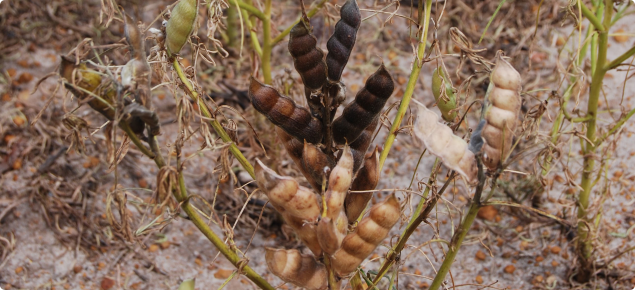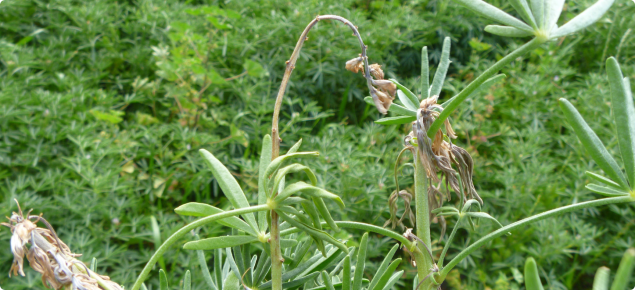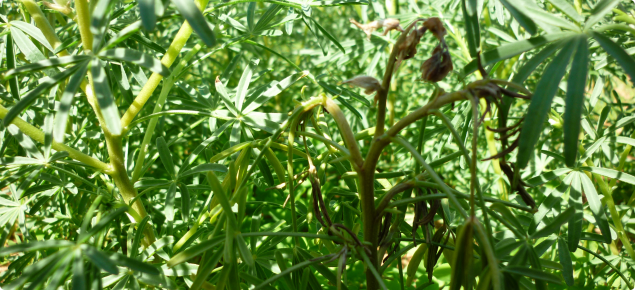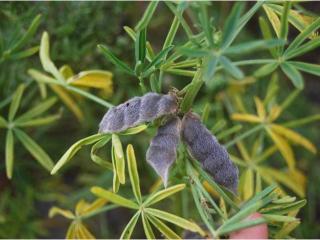Bean yellow mosaic virus (BYMV) infection in narrow-leafed lupin can cause three main symptom types. When infection occurs before pod set, the most common symptom is the necrotic (BYMV-N) symptom that kills the infected plant. There is also the less common non-necrotic (BYMV-NN) symptom causes stunting without killing the plant. When plants are infected after pod set, black pods develop (black pod syndrome or BPS).
The BYMV strains which are endemic in south-western Australia are not seed-borne in lupins, unlike overseas strains.
Symptoms
BYMV-N
Initial symptoms are necrotic streaking of the youngest portion of the shoot, which bends over causing a characteristic ‘shepherd’s crook’ appearance. The growing tip dies, and leaves become pale, wilt and fall off. Necrotic streaking and blackening then spread throughout the stem causing the plant to die. Plants infected early die quickly and do not produce seed. When old plants become infected, the necrotic symptoms are slower to spread and may be restricted to some branches or the section of the plant near to the infection site. These shoots die and their pods blacken and fail to fill while the rest of the plant grows normally.
BYMV-NN
Non-necrotic symptoms on younger leaves show pallor, mottling and leaf deformation and the affected plant is stunted. Sometimes, the death of growing points causes fleshy, expanded leaves to develop on the rest of the plant. Infected plants produce few seeds and endemic BYMV strains are not seed-borne.
Black pod syndrome
Infection after pod set leads to pods turning black and necrotic stem streaking. Leaves turn yellow and drop. Seeds will fail to develop. Varieties vary in symptom development.
Sources of virus
The main source of BYMV is infected clover plants in adjacent pastures. The virus is seed-borne in clover and survives from one growing season to the next in the pasture seed bank. Clover weeds in lupin crops are an additional source if not controlled. Perennial native legumes in adjacent bush may occasionally act as BYMV reservoirs.
If there are no internal clover weed sources, BYMV infection is highest near the edge of a lupin crop close to pasture, especially at its windward edge. For BYMV-N, there is only a brief period between initial symptom formation in young plants and their death, so incoming aphids can only acquire the virus from infected lupin plants for one to two weeks. Infection incidence declines rapidly with increasing distance into the crop. Plants infected with BYMV-NN remain green and attractive to aphids. They therefore provide a continuous source of infection within the crop so aphids spread it away from the crop edge at a faster rate.




